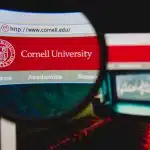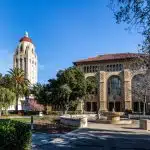When it’s time to build your college list, the sheer number of choices can feel overwhelming. While Ivy League schools are well-known for their prestige, there’s another group of elite institutions you should consider: the “Hidden Ivies.”
Let’s be honest—the harsh reality is that most students who apply to the Ivy League won’t get accepted. Even those who improve their chances may still face rejection, as many talented applicants are ultimately turned away. However, this doesn’t mean a world-class education is out of reach. In fact, the Hidden Ivies are a group of prestigious schools that offer exceptional academic opportunities but aren’t part of the eight Ivy League institutions.
In this guide, we’ll cover everything you need to know about these schools, including some of the top Hidden Ivies and the benefits of applying to one.
- What Are the Top 7 Hidden Ivies in the US?
- What Are Hidden Ivies All About?
- Should You Apply to Hidden Ivies?
- Frequently Asked Questions
- Takeaways
What Are the Top 7 Hidden Ivies in the US?
Currently, the Hidden Ivies list consists of 63 schools, ranging from smaller liberal arts colleges to large research universities. The term originates from a book published in 2000 by Howard and Matthew Greene. In the book, they identified 63 colleges that shared key characteristics with Ivy League schools.
Among them, 7 Hidden Ivies consistently rank in the Best National Universities by US News and World Report. They are the following:
1. Massachusetts Institute of Technology (MIT)
Acceptance rate: 4%
Average tuition cost: $60,156
“Mind and Hand” is the motto of the Massachusetts Institute of Technology, commonly known as MIT. This captures the institution’s mission to advance knowledge in science, technology, and scholarship aimed at improving the world.
Founded in 1861 as a small community of problem-solvers and science enthusiasts, MIT has grown into a renowned institution. Today, it boasts around 1,000 faculty members and over 11,000 undergraduate and graduate students.
MIT is an independent, coeducational, privately endowed university, organized into five schools:
- architecture and planning
- engineering
- humanities, arts, and social sciences
- management
- science
It also has one college dedicated to computing. MIT researchers lead breakthroughs in areas like:
- artificial intelligence
- climate adaptation
- HIV
- cancer
- poverty alleviation
Historically, MIT research has been behind key developments such as radar, magnetic core memory, and the expanding universe theory.
But MIT’s strengths go beyond science and technology. About 20% of undergraduates participate in varsity sports, and with 33 varsity teams, MIT offers one of the most expansive intercollegiate athletic programs in the world—proving itself among the top hidden ivies.
MIT also boasts a thriving arts culture, with 12 museums and galleries on campus, including the MIT Museum, which attracts nearly 125,000 visitors annually. You can engage in over 60 music, theater, writing, and dance groups, while MIT faculty include Pulitzer Prize winner David Baltimore who received the prize for his contribution to medicine—and Guggenheim fellows Sabine Latridou for Linguistics and Philosophy and Jonathan Gruber for Economics.
2. California Institute of Technology
Acceptance rate: 3%
Average tuition cost: $63,300
The California Institute of Technology (Caltech) is a world-renowned institution focused on science and engineering research and education.
At Caltech, you’ll find a high level of research output and access to top-tier facilities like:
- NASA’s Jet Propulsion Laboratory
- Caltech Seismological Laboratory
- International Observatory Network
As one of the few institutes in the U.S. dedicated primarily to technical arts and applied sciences, Caltech’s highly competitive admissions process ensures that only the most gifted students are accepted.
Founded in 1891 by Amos G. Throop as a preparatory and vocational school, Caltech’s mission is “to expand human knowledge and benefit society through research integrated with education.” It became a major hub for scientific research in the U.S. in the early 20th century and played a crucial role in the US war effort during World War II.
Today, Caltech is home to the Einstein Papers Project, which preserves, translates, and publishes selected works from Albert Einstein’s estate. The school has also established an energy innovation system dedicated to discovering revolutionary ways to generate fuels from sunlight.
Campus life is rich with social activities, clubs, and recreational facilities. Sports are taken seriously here, with the Caltech Beavers (inspired by the beaver, nature’s engineer) competing in 13 intercollegiate sports.
You’ll also find excellent opportunities to study and participate in music, theater, and the visual arts—activities that play a vital role in fulfilling Caltech’s mission to educate outstanding students to become creative members of society.
3. Duke University
Acceptance rate: 6%
Average tuition cost: $66,200
Founded in 1838, Duke University is a private research university in Durham, North Carolina, named after the father of its benefactor, James Buchanan Duke.
As the seventh-wealthiest private university in the U.S., Duke has a strong academic reputation. In 2014, Thomson Reuters named 32 Duke professors as Highly Cited Researchers. The university is home to ten Nobel laureates, including Paul Modrick for his contributions to chemistry, and Turing Award winner Edmund Melson Clarke. Duke is also the second-largest private employer in North Carolina.
Duke’s Levine Science Research Center is the largest interdisciplinary research facility of any U.S. university. In 2014, Duke expanded internationally by opening Duke Kunshan University in China, which combines American-style liberal arts education with Chinese traditions.
With around 15,000 students, most of whom are postgraduates, Duke maintains an 8:1 student-to-faculty ratio, ensuring a personalized learning experience. Undergraduates have access to four academic schools, including:
- Trinity College of Arts and Sciences
- Sanford School of Public Policy
Graduate students can enroll in nine schools, some of which are:
- Duke Law
- Fuqua School of Business
- School of Medicine
Duke has a diverse, politically active student body. Martin Luther King Jr. spoke on campus during the civil rights movement, and in 2017, the university removed a statue of Confederate General Robert E. Lee from Duke Chapel following the violence in Charlottesville.
With over 400 student organizations, ranging from cultural and faith-based to political and service-oriented, Duke offers endless opportunities to explore your passions and connect with others.
4. Johns Hopkins University
Acceptance rate: 7%
Average tuition cost: $63,400
Johns Hopkins University is a private research university founded in 1876 and named after its first benefactor, the entrepreneur and philanthropist Johns Hopkins.
As the first research university in the U.S., Johns Hopkins paved the way for integrating teaching and research. Today, it invests more in research than any other US academic institution and has produced 27 Nobel laureates, including former US president Woodrow Wilson.
Johns Hopkins is divided into 10 divisions, with campuses in Maryland and Washington, DC, and international centers in Italy, China, and Singapore. Regularly ranking in the top 10 U.S. universities, it also competes globally, especially for its undergraduate programs.
More than 24,000 students, both full- and part-time, are enrolled across nine academic divisions. Faculty and students engage in over 260 programs spanning:
- arts and humanities
- sciences
- engineering
- international studies
- education
- business
- health professions
If you’re an undergraduate, you’ll likely study at the Homewood campus, a 140-acre traditional college setting in North Baltimore. Nearly all first- and second-year students live in residence halls, where you’ll have the chance to make friends and enjoy one of the best campus dining programs in the U.S.
You’ll also have access to world-class arts and culture. The Peabody Institute, the university’s conservatory, regularly hosts concerts and performances, while the Center for Visual Arts, near the Baltimore Museum of Art, offers ample inspiration for aspiring artists.
5. Northwestern University
Acceptance rate: 7%
Average tuition cost: $66,000
With three campuses and a global reach, Northwestern University breaks traditional academic boundaries. Its collaborative environment offers you opportunities for both personal and professional growth.
As one of the country’s leading private research and teaching universities, Northwestern has two campuses on Lake Michigan: the 240-acre main campus in Evanston and a 25-acre campus in Chicago. A third campus is located in Doha, Qatar.
Northwestern is home to over 8,000 full-time undergraduates and more than 13,000 graduate and professional students. As a member of the Big Ten Conference, its athletic teams are known as the Wildcats. Morton Schapiro has been president since 2009.
Ranked 9th among national universities by U.S. News and World Report, Northwestern is recognized both nationally and internationally for its educational programs. It offers need-based financial aid to international undergraduate students and meets 100% of demonstrated financial need for all admitted first-year students for four years.
The university’s twelve colleges and schools include:
- Bienen School of Music
- Weinberg College of Arts and Sciences
- School of Communication
- School of Education and Social Policy
- McCormick School of Engineering
- Medill School of Journalism
- Pritzker School of Law
- Kellogg School of Management
- Feinberg School of Medicine
- School of Professional Studies
6. University of Chicago
Acceptance rate: 5%
Average tuition cost: $65,700
Founded in 1856, the University of Chicago is a private research university located in the heart of Chicago, the third-largest city in the U.S. Outside of the Ivy League, it’s one of America’s top universities, consistently ranked in the top ten both nationally and internationally.
In addition to its strong arts and sciences programs, the university is known for its prestigious professional schools, including:
- Pritzker School of Medicine
- Booth School of Business
- Harris School of Public Policy
The university’s crest features a phoenix rising from the ashes, symbolizing its rebirth in 1890 after the fire, foreclosure, and demolition of the Old University of Chicago. The original university, founded with land from controversial senator Stephen Douglas, later gave way to the new institution, which was co-educational and funded by donors like John D. Rockefeller.
As a student, you’ll have access to over 400 clubs and organizations, including sports teams, arts, cultural and religious groups, and academic and political societies.
If you’re interested in media and film, you’ll be in good company. The university is home to Doc Films, the longest continuously running student film society, and also publishes several newspapers and magazines. You can join the renowned improvisational theater troupe Off-Off Campus or learn broadcasting at the university-owned radio station WHPK.
Notable faculty and alumni include 29 Nobel laureates and former U.S. president Barack Obama. Alumni from nearly every field have made their mark, including novelists Philip Roth and Saul Bellow, pollster Nate Silver, and Obama strategist David Axelrod.
7. Rice University
Acceptance rate: 9%
Average tuition cost: $58,200
Rice University consistently ranks among the top 20 universities in the US according to US News & World Report. Rice is known for its respected schools of:
- architecture
- business
- continuing studies
- engineering
- humanities
- music
- natural Sciences
- social Sciences
It’s also home to the Baker Institute for Public Policy.
With 4,240 undergraduates and 3,972 graduate students, Rice offers a student-to-faculty ratio of 6:1. Its unique residential college system promotes close-knit communities and lifelong friendships—one of the reasons Rice is ranked No. 1 for race/class interaction and No. 1 for quality of life by the Princeton Review. Kiplinger’s Personal Finance also rates Rice as one of the best-value private universities.
Rice combines academics and campus life with what it calls an “unconventional culture,” where you’ll build community and a sense of belonging by living in one of the 11 residential colleges. Traditions on campus encourage you to show your school spirit, especially by cheering on the Rice Owls during game days. Rice also has a strong connection with NASA, with 14 alumni and faculty members who have become astronauts, including former NASA administrator and alumnus Jim Bridenstine.
What Are Hidden Ivies All About?
The Hidden Ivies are colleges and universities considered to rival the eight Ivy League schools without being part of that prestigious group. These schools offer similar academic opportunities to students but might get overlooked because of their lack of popularity when compared to the famous Ivies. That’s why these schools are considered “hidden” when compared to their more well-known Ivy League counterparts.
The Hidden Ivies share some important similarities to the real Ivies beyond excellent academic opportunities. These schools generally have smaller student bodies and are either liberal arts colleges or universities.
These similarities lead many to compare these schools to the well-established Ivy League schools which so many high schoolers aspire to attend. If you’ve never heard of the “Hidden Ivies,” you’re not alone.
The term actually originates from a 2000 book by the same name. Howard and Matthew Greene co-authored the book in which 63 colleges were identified for their similarities to the Ivy League. Some of the overarching characteristics included a low acceptance rate, academic rigor, liberal arts education, and smaller size.
The book is still being sold and is actually in its 3rd edition. It was written to help students who don’t get into the Ivies to find suitable schools that still meet their academic goals.
Should You Apply to Hidden Ivies?
Now that we’ve covered everything you need to know about the Hidden Ivies, it’s time to talk about whether or not you should apply to these schools.
Any high schooler would receive an excellent education from any one of these schools. But that still doesn’t answer the question. Besides, if you’re looking at the Hidden Ivies, the original Ivy League is most likely high on your list of potential colleges. Let’s take a look at some reasons you should apply to the Hidden Ivies:
You didn’t get into the Ivies.
One of the most common reasons you might consider applying to the Hidden Ivies is because of your desire to attend an Ivy League school.
Wait, that doesn’t sound like it makes any sense, right? Yes, it sounds counter-intuitive at first, but we’ll explain. All high schoolers are encouraged to make a list of colleges to which they will apply. The top of the list is reserved for your dream school.
Everything below that in descending order represents the schools you want to attend if the option above doesn’t work out. When you have your heart set on the Ivies, placing the hidden Ivies as backups is an excellent option.
You’re ensuring that the aspects that encouraged you to apply to the Ivies in the first place are still present in your backup colleges. Of course, you will ideally make it into your number one choice. But, considering the high selectivity of these schools, it’s smart to have backups.
You want to avoid high tuition costs.
The Ivy Leagues are well-known for their world-class faculty, rigorous academics, and high endowments. However, these schools do have some notable drawbacks, one of which is cost.
A major obstacle to the Ivies for many applicants is the high tuition rates of these universities. If your goal is to reach the Ivies but you simply don’t want to pay the price, the Hidden Ivies and all other almost-Ivy groups are an excellent place to look for alternatives.
You want to go to school close to home.
All Ivy League schools are located in the northeastern portion of the United States. If you want to stick close to home while in college, this geographical block might make attending the Ivies a bit challenging.
That’s where the Hidden Ivies come in. These universities and colleges are known for their academic opportunities and excellent faculty, just like the Ivy League.
Unlike the Ivies, though, these schools are scattered throughout the country in nearly every state. You’re bound to find one that matches your academic and professional goals without having to live far from home.
This way, you can have the kind of college experience you want without making any sacrifices in terms of quality or location. It’s a win-win!
Frequently Asked Questions
1. How do Hidden Ivies differ from Ivy League schools?
While both Hidden Ivies and Ivy League schools offer exceptional education and similar academic rigor, the Hidden Ivies tend to be smaller in size and may be less known—which means lesser competition.
However, they still provide comparable resources, top-notch faculty, and strong alumni networks in a more intimate campus setting.
2. Are admissions to Hidden Ivies as competitive as Ivy League schools?
Yes, admissions to Hidden Ivies can be highly competitive, though some may have slightly higher acceptance rates compared to Ivy League schools, which only hovers above 3%. Most Hidden Ivies have an acceptance rate of more than 5%.
3. Do Hidden Ivies offer financial aid comparable to Ivy League schools?
Yes, many Hidden Ivies offer generous financial aid packages, often meeting 100% of demonstrated financial need for admitted students.
Takeaways
- Some of the top hidden Ivies in the US are MIT, Caltech, and Duke University.
- Consider some of the hidden Ivies in your college planning. These colleges also offer excellent programs that Ivy Leagues do. They are great alternatives if studying at an Ivy League school is not an option for you.
- The college admissions process is often confusing and even a bit nerve-wracking, especially when you’re applying to a prestigious and highly selective university like the Hidden Ivies. We at AdmissionSight can help! For over a decade, we’ve been helping students just like you master the college application process and nail their applications. In fact, 75% of the students we work with get accepted into an Ivy League school or Top 10 university.

Eric Eng
About the author
Eric Eng, the Founder and CEO of AdmissionSight, graduated with a BA from Princeton University and has one of the highest track records in the industry of placing students into Ivy League schools and top 10 universities. He has been featured on the US News & World Report for his insights on college admissions.





















